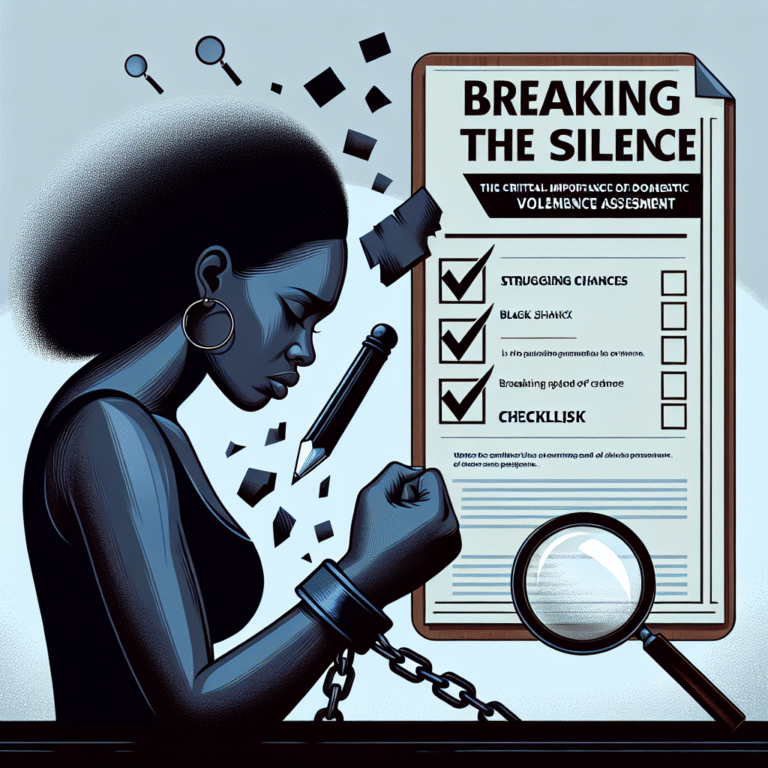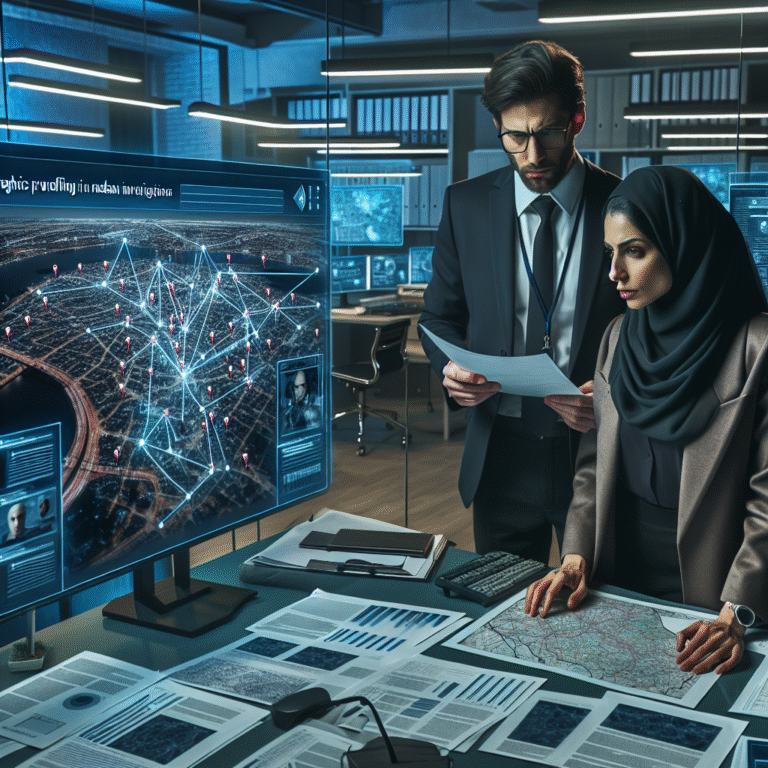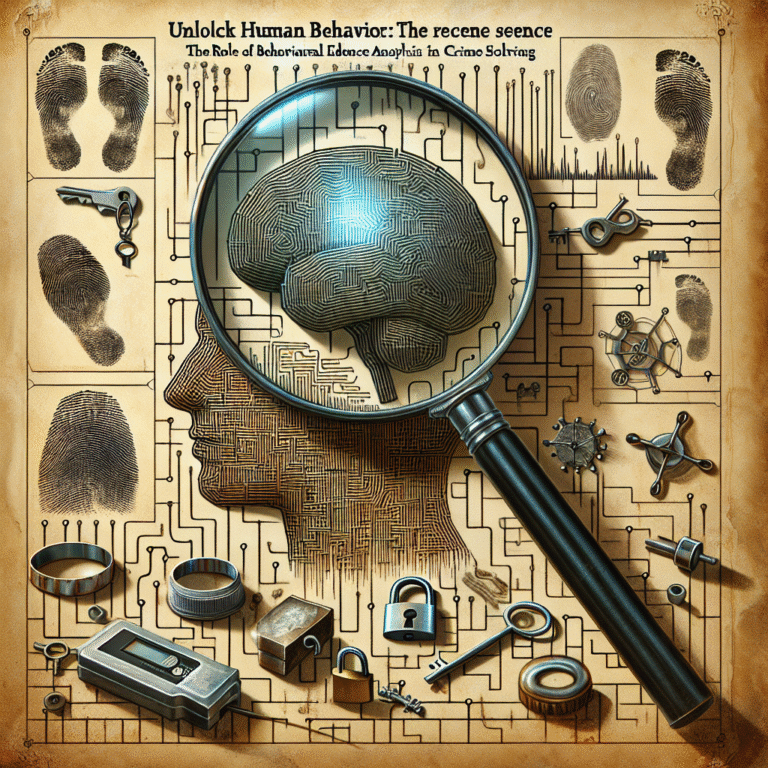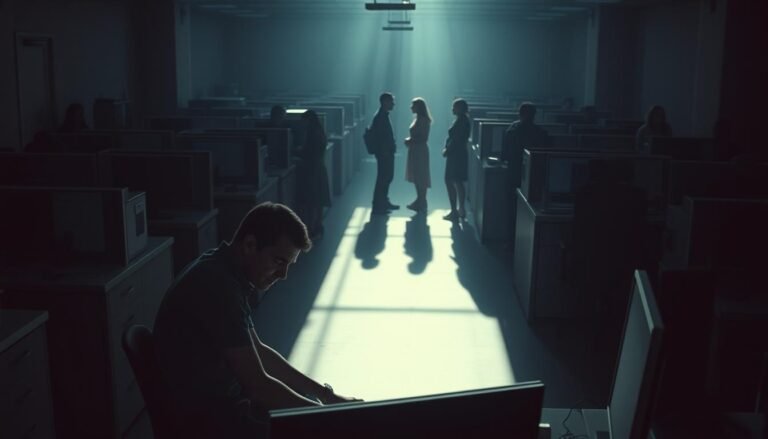
Introduction
In the intricate dance of crime investigation, the shadows cast by uncertainty can often obscure the path to justice. Yet, beyond the crime scene lies a powerful tool: criminal profiling. This essential discipline transforms abstract hints into concrete leads, helping law enforcement agencies piece together the enigmatic puzzle of criminal behavior. In this comprehensive exploration of Beyond the Crime Scene: How Criminal Profiling Aids Investigations, we will delve into the art and science of profiling, showcasing its profound effects on real-life cases and its invaluable role in modern forensic science.
Understanding Criminal Profiling
What is Criminal Profiling?
Criminal profiling, often referred to as behavioral profiling, involves creating a psychological portrait of a suspect based on the characteristics of the crime. By examining patterns in behavior, motives, and methods, profilers can provide law enforcement with crucial insights, allowing them to narrow down suspects and anticipate future actions.
The Psychology Behind Profiling
At its core, criminal profiling relies on understanding human psychology. Factors such as motive, opportunity, and context play critical roles in shaping criminal behavior. Profilers draw upon a host of psychological theories and frameworks to predict how a suspect may act in the future, which aids in prevention and apprehension efforts.
The Role of Criminal Profiling in Investigations
Enhancing Investigative Strategies
Criminal profiling doesn’t just assist in identifying suspects; it enhances overall investigative strategies. By understanding the psychology behind a crime, law enforcement can improve interrogation techniques and develop more targeted search warrants.
Case Study: The Atlanta Child Murders
In the late 1970s and early 1980s, Atlanta was rocked by a series of child murders that claimed the lives of 29 young African American children. The FBI’s behavioral analysis unit provided vital insights by analyzing the patterns of the murders. Profilers speculated that the perpetrator may have been someone who was familiar with the area and had a specific preference for young boys. This information proved pivotal in the eventual arrest and conviction of Wayne Williams, showcasing how criminal profiling can lead to restoral of community safety.
Utilizing Geographic Profiling
Geographic profiling is a specialized subset of criminal profiling that uses the locations of a series of crimes to predict where an offender may live or operate. This technique has evolved significantly with advancements in technology, allowing for more sophisticated analyses and predictive mapping.
| Crime Location | Description | Geographic Profile Insight |
|---|---|---|
| Downtown | High-density residential area | Suspect likely resides nearby |
| Suburbs | Lancaster Road area | Suspect may have connections locally |
| Parks | Common crime scene for muggings | Suggests familiarity with greenery |
The Impact of Technology on Criminal Profiling
Digital Age Profiling
As society becomes increasingly digital, so does criminal behavior. Profilers now examine online activity, social media behavior, and digital footprints to construct profiles. Understanding a suspect’s online presence can unveil motives, connections, and past behaviors, providing a more complete picture.
Advancements in Algorithms
The integration of artificial intelligence and machine learning has opened new frontiers in criminal profiling. Algorithms can sift through massive datasets, identifying patterns and correlations that human analysts may overlook. This new technology enhances the capabilities of law enforcement, making investigations more efficient.
Tools and Techniques Used in Profiling
Behavioral Analysis Techniques
Profilers utilize a variety of techniques to analyze behavior, including:
- Interview Techniques: Understanding how to conduct interviews that elicit meaningful information.
- Psychological Assessments: Assessing personality traits of suspects against behavioral patterns.
- Crime Scene Analysis: Scrutinizing the crime scene for psychological clues left by the perpetrator.
The Role of Forensic Evidence
Forensic evidence plays an integral role in supporting the profiler’s work. By combining physical evidence with behavioral insights, investigators can build a robust case against a suspect.
Case Studies of Successful Profiling
1. The Unabomber Case
The FBI’s Behavioral Analysis Unit played a crucial role in the Unabomber case. Profilers analyzed the language and content of Ted Kaczynski’s manifesto to paint a psychological portrait of the suspect. This led to his eventual identification and capture.
2. The Green River Killer
Gary Ridgway, known as the Green River Killer, was apprehended thanks in part to the work of profilers. By analyzing the geographical patterns of the murders and understanding his psychological profile, investigators were eventually able to link Ridgway to the crimes.
Analysis: These high-profile cases exemplify how criminal profiling not only assists in catching suspects but also serves as a backbone for comprehensive investigative strategies.
Challenges in Criminal Profiling
The Pitfalls of Profiling
While criminal profiling has proven effective, it is not without its challenges. Profilers must navigate the dangers of stereotyping and bias, ensuring that their analyses are rooted in factual evidence rather than assumptions. Misguided profiling can lead to wrongful accusations, highlighting the importance of using profiling as one tool among many in an investigation.
Ethical Considerations
The use of profiling raises ethical questions, including concerns about privacy and discrimination. As techniques become more advanced, the balance between effective profiling and respecting individual rights is an ongoing debate within law enforcement and society at large.
Future Directions in Criminal Profiling
Integrating Multi-Disciplinary Approaches
The future of criminal profiling lies in its integration with other disciplines, such as neuroscience, sociology, and cybersecurity. This holistic approach can create a more nuanced understanding of criminal behavior, enhancing the effectiveness of investigations.
Education and Research
As the field of criminal profiling evolves, ongoing education and research are paramount. Future profilers must stay abreast of technological advancements and psychological theories to maintain their effectiveness.
Conclusion
Beyond the Crime Scene: How Criminal Profiling Aids Investigations reveals a powerful narrative of how understanding human behavior can illuminate the darkest corners of crime. With its intricate techniques and varied applications, criminal profiling stands as an essential component of modern investigations. By combining psychological insights with forensic evidence, law enforcement not only apprehends criminals but also fortifies community safety and justice.
As we look toward the future, it is imperative that profiling evolves alongside societal changes, continually refining its techniques while upholding ethical standards. The effective application of these methods today can lead to safer, more just communities tomorrow.
FAQs
1. What is criminal profiling?
Criminal profiling is the process of creating a psychological portrait of a suspect based on the characteristics of their crimes, helping law enforcement narrow down suspects and anticipate future actions.
2. How does criminal profiling aid investigations?
Profiling enhances investigative strategies by providing insights into the suspect’s behavior, which can guide law enforcement in interrogations, search warrants, and overall case strategies.
3. Can criminal profiling lead to wrongful accusations?
Yes, profiling can lead to wrongful accusations if biases or stereotypes influence the analysis. It is crucial for profilers to base their work on factual evidence rather than assumptions.
4. What role does technology play in criminal profiling?
Technological advancements, such as AI and data analytics, have significantly impacted criminal profiling by enabling the analysis of larger datasets, revealing patterns that human analysts might miss.
5. How can profiling be improved in the future?
Future improvements in criminal profiling can come from integrating interdisciplinary research, continuous education, and ethical considerations to create a more comprehensive understanding of criminal behavior.

















